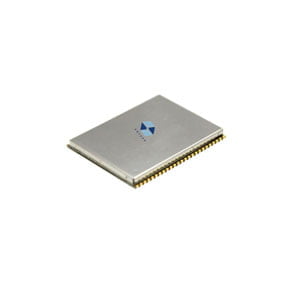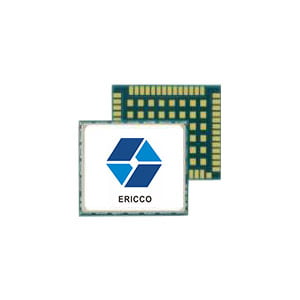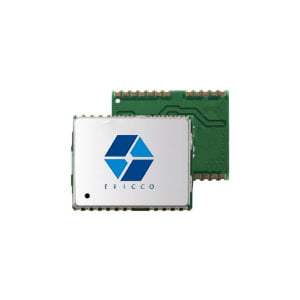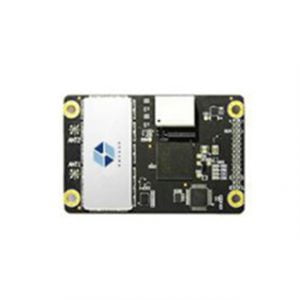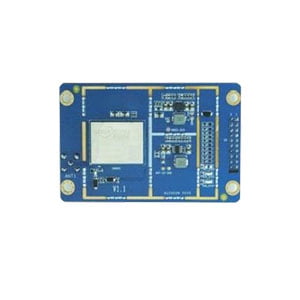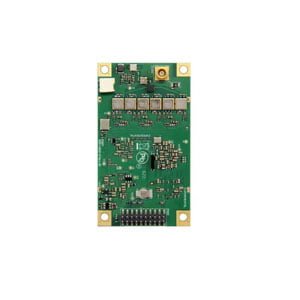In the world of navigation technology, where precision is paramount and every inch matters, the terms "GNSS board" and "GNSS module" often surface. While these terms might sound similar, they bear subtle distinctions that carry significance in the intricate landscape of global navigation. This article delves into the nuanced disparities between GNSS boards and GNSS modules, elucidating their distinct roles, characteristics, and applications. Join us on this exploration as we unravel the intricacies of these components in the world of navigation technology.
GNSS Module
A GNSS module is a self-contained device that integrates a GNSS receiver and an antenna into a compact package. Within GNSS modules lies the entirety of components, RF circuitry, and antennas essential for linking to GNSS satellites. These modules receive timestamp data, enabling the determination of a device's location, all encapsulated in a user-friendly, compact format for seamless integration.
The most significant measurement of GNSS performance for modules is TTFF (time-to-first-fix). It is a crucial parameter that measures the time it takes for a GNSS module to acquire satellite signals and calculate a position fix after being powered on or after losing its previous fix. TTFF is often expressed in seconds and can be categorized into three different types: Cold Start TTFF, warm and hot. Effective performance measurement of GNSS modules is crucial, as achieving a reduced Time to First Fix (TTFF) is essential to keep power consumption at manageable levels—a common challenge in satellite communications.
These modules are the workhorses behind the scenes, transforming signals from the vast expanse of space into actionable location data for various applications. Here are several features of GNSS module:
- Compact Design:GNSS modules are designed to be space-efficient, making them ideal for integration into a wide range of devices. From smartphones to wearable devices and even precision agriculture equipment, the compact form factor of GNSS modules ensures versatility in application.
- Easy Integration:These modules come pre-packaged, simplifying integration into electronic devices. Manufacturers can seamlessly incorporate GNSS modules into their products, reducing development time and costs.
- Power Efficiency:GNSS modules are engineered with power efficiency in mind. They are designed to operate with minimal power consumption, making them suitable for battery-powered devices that require extended usage.
GNSS Board
On the other hand, A GNSS board could be a more inclusive term that encompasses not only the compact modules but also the larger circuit boards or development boards used for prototyping or testing GNSS - related technologies. In this context, a GNSS board might include additional components or connectors for more flexible use in research, development, or specialized applications.
Consider the ER-GB-05, a compact yet high-performance integrated navigation board that exemplifies an advanced navigation solution. This board utilizes sophisticated multi-mode and multi-frequency technology, coupled with dual-antenna positioning and orientation features. It seamlessly integrates a high-precision GNSS module with a MEMS inertial measurement unit (IMU). This synergistic combination empowers it to provide precise and swiftly updated 3D position, velocity, and attitude information. Additionally, the IMU contributes raw acceleration and angular velocity measurements. In essence, the ER-GB-05 stands as a technologically advanced navigation solution, showcasing the seamless integration of GNSS and IMU capabilities for optimal performance in various navigation scenarios.
One of the notable strengths of the board lies in its robust performance in challenging environments. With a focus on absolute accuracy in GNSS positioning and the stability of inertial measurements, this navigation board maintains stability and continuity in providing positioning and posture calculation results, even in scenarios with complete signal blockage within complex environments.
What's more, the ER-GB-05 boasts several advanced functionalities, including moving base alignment, inertial/satellite integrated navigation, autonomous zero-speed correction, and independent calibration. Additionally, its integration capabilities with odometer data further enhance accuracy in car navigation applications.
Based on the information provided above, it is evident that GNSS boards offer the following features:
- Customization Potential:Unlike GNSS modules, GNSS boards provide greater flexibility and customization options. Engineers can tailor the board to meet specific requirements, adding or removing components based on the application's needs.
- Processing Power:GNSS boards often come equipped with additional processing capabilities. This allows for on-board data processing, enabling more complex calculations and applications without relying heavily on external devices.
- Versatility in Applications:While GNSS modules are designed for specific applications, GNSS boards can serve a broader range of purposes. From advanced research projects to specialized industrial applications, GNSS boards offer a versatile platform for developers and engineers.
Bridging the Gap: Real-World Applications
Now that we've distinguished between GNSS modules and GNSS boards, let's explore how these components manifest in real-world applications.
GNSS modules are designed to be embedded into various electronic devices, providing them with satellite positioning capabilities. These modules are typically smaller and more streamlined for integration into different applications. Consider the popular scenario of UAVs (Unmanned Aerial Vehicle). In this case, a GNSS module is the driving force behind the accurate tracking of flight data. The compact nature of the module allows manufacturers to seamlessly integrate it into the profile of drones, which have strict requirements for weight control. Its primary function is to receive signals from satellites and translate them into real-time location data for the user's benefit.
Imagine a research project that demands more than just basic location tracking. This is where a GNSS board shines. With the ability to incorporate additional components like advanced processors and memory, a GNSS board can handle complex calculations and contribute to intricate research endeavors, pushing the boundaries of navigation technology.
To sum up, in the grand symphony of navigation technology, GNSS modules and GNSS boards each play a distinct yet complementary role. One is the compact orchestra, orchestrating seamless location tracking in our everyday devices, while the other is the versatile canvas, catering to a spectrum of applications demanding customization and advanced capabilities.
I will appreciate it if you find this article helps you a lot. For more information, you may read the articles and products below.
More Technical Questions
1. Integration of GNSS Modules in Aviation: Precision Navigation for Unmanned Aerial Vehicles (UAVs)
2. Distinctions Between GNSS Receivers and Antennas
3. Equipment Used in GNSS: Navigating Precision and Accuracy
5. The Difference and Connection between GPS and GNSS
Products in Article
